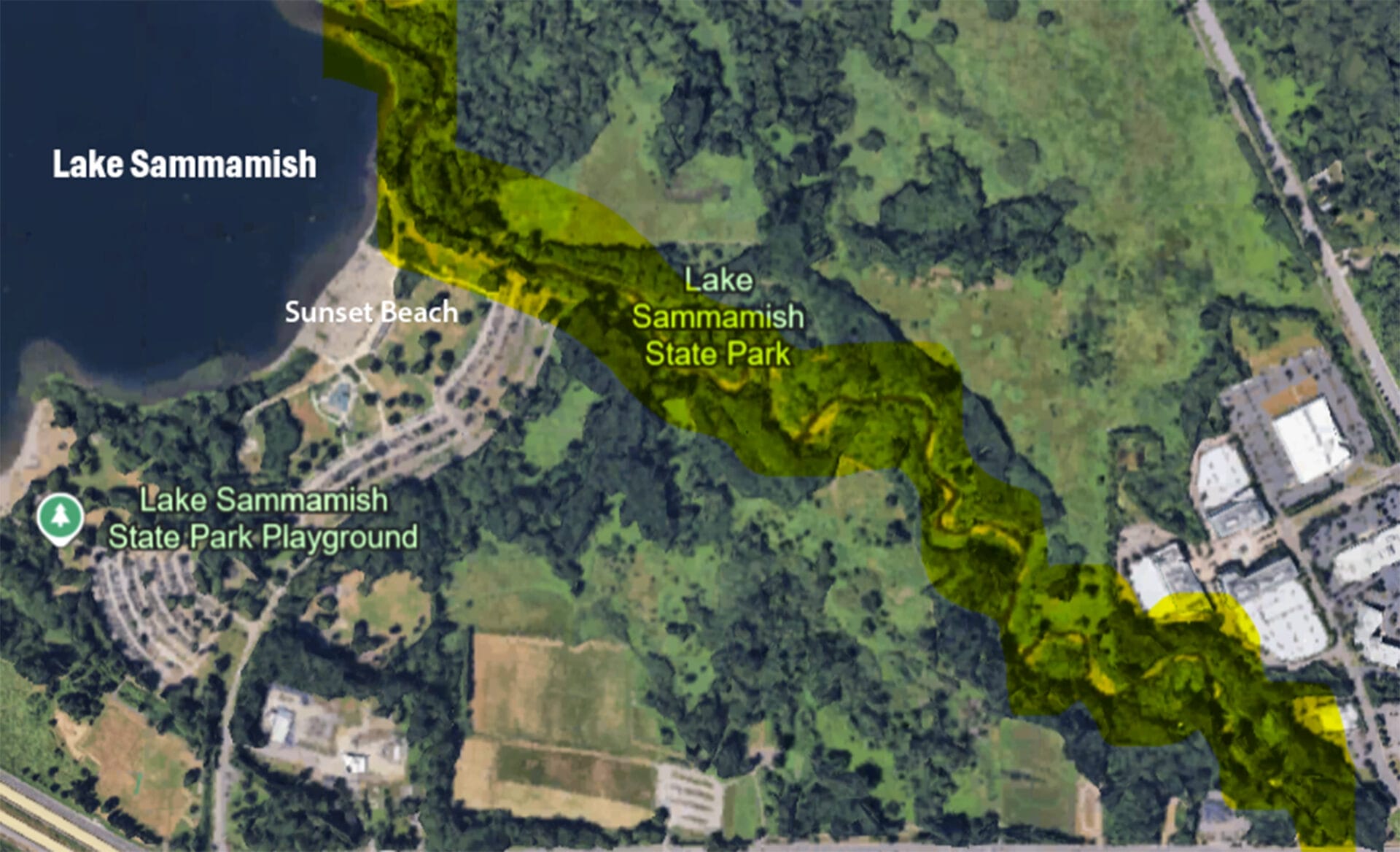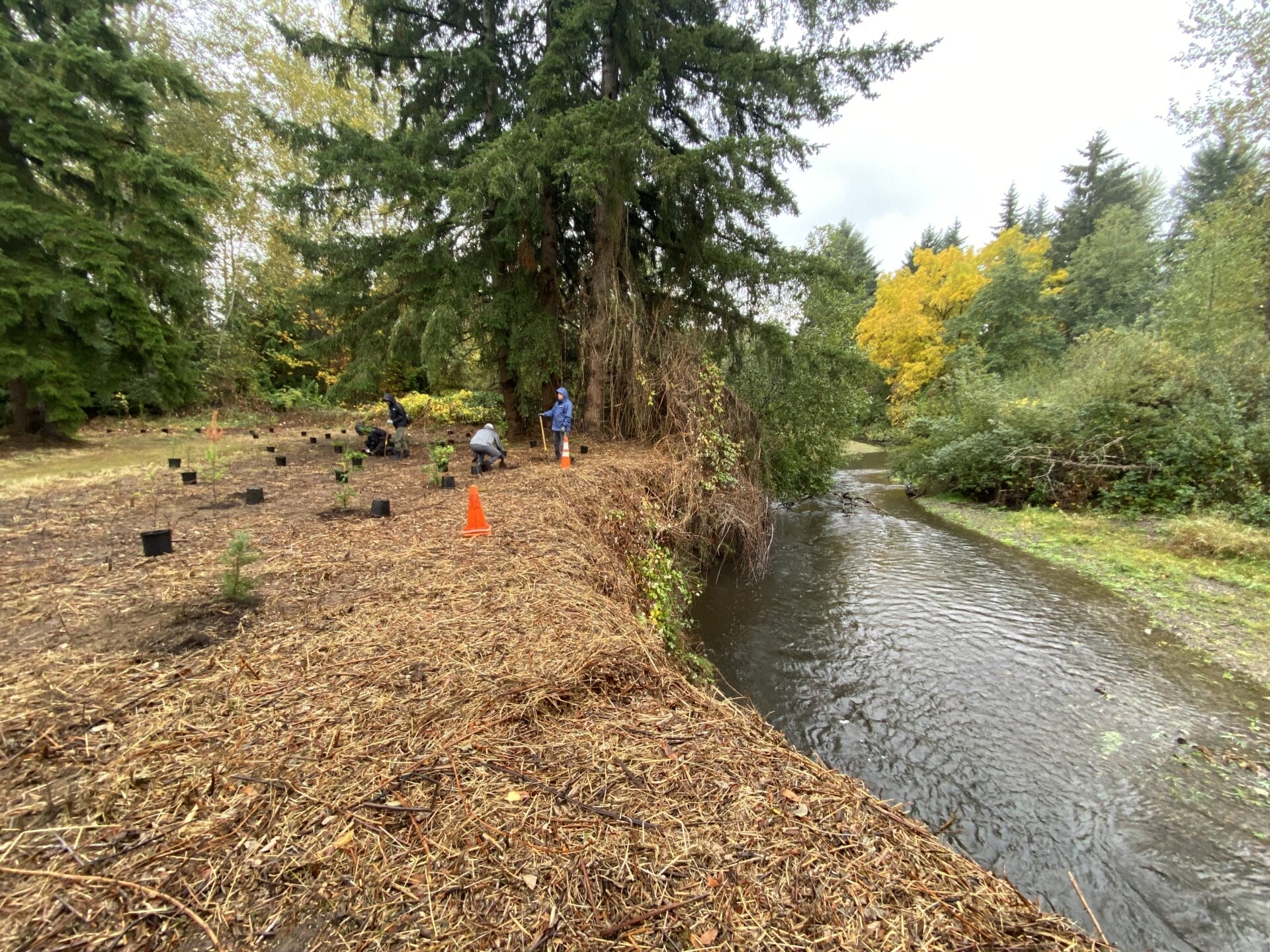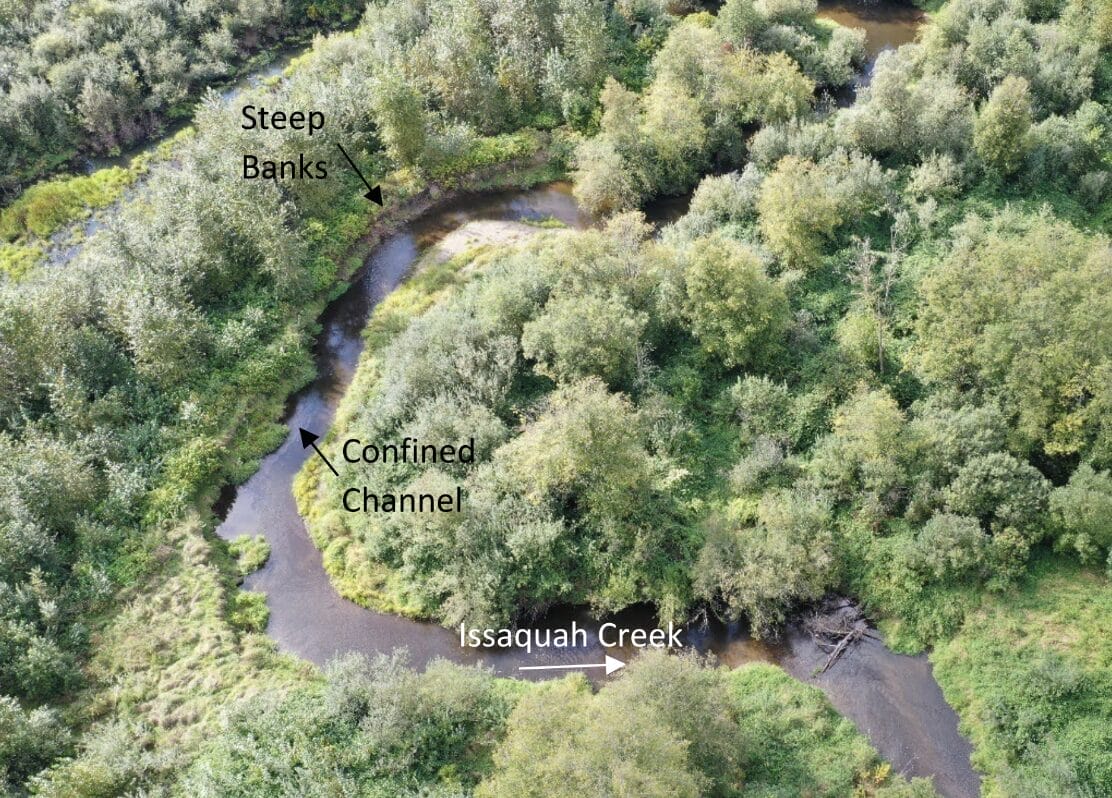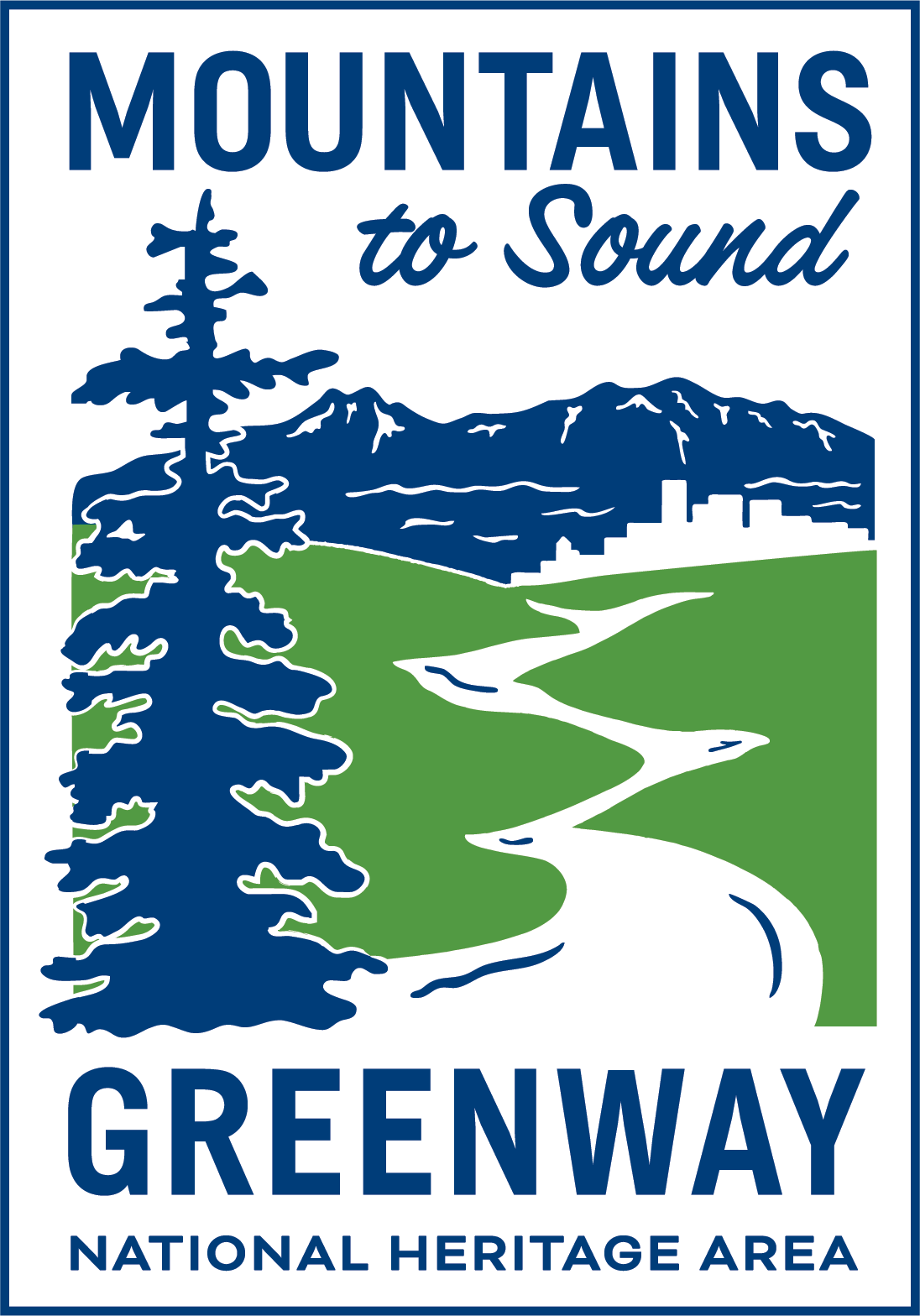Kicking Off the Largest Restoration Project in Greenway Trust History
After nearly a decade of planning, The Mountains Sound Greenway Trust has launched its biggest restoration project yet in Lake Sammamish State Park to enhance critical salmon habitat in Issaquah Creek. With hundreds of pieces of large wood poised for placement, in-stream restoration work has begun and will continue through mid-August, while salmon are not actively migrating through Issaquah Creek.
This project is one of the largest in Lake Sammamish State Park’s history and builds on more than 20 years of volunteer-driven work to restore natural habitat conditions. Working in partnership with the Washington State Parks & Recreation Commission, and with close coordination and input from local governments, Tribes, nonprofits, businesses and dedicated volunteers, the Greenway Trust aims to continue significant improvements that will rehabilitate 4,600 feet of Issaquah Creek to enhance riparian and stream habitat that help salmon thrive.

From Historic Development to Modern-Day Restoration Efforts
Since time immemorial, Issaquah Creek has sustained both people and wildlife, serving as a cultural and ecological cornerstone for Indigenous people who continue to care for and steward this vital place. Lake Sammamish State Park’s 512-acre day-use park is enjoyed by more than two million visitors annually. While people cherish the park for its trails, lakeside beaches, and wildlife today, it sits on land that was once an abundant, healthy forest bustling with activity. As growing settler populations moved in from the 1800s to the1900s, the area was logged and agriculturally developed, resulting in major forest habitat loss.
By the 1990s, seasonal flooding in downtown Issaquah had become frequent, and fewer salmon swam through a creek choked with blackberry thickets that limited access for both wildlife and people. As evidence of habitat degradation became evident, and with the listing of Puget Sound Chinook Salmon as Threatened under the Endangered Species Act, local leaders formed the Lake Washington/Cedar/Sammamish Watershed (WRIA 8) Salmon Recovery Council in 1998 to lead salmon recovery efforts in this Watershed (other entities were formed to guide efforts throughout Puget Sound watersheds). With the publication of the WRIA 8 Chinook Salmon Conservation Plan and the Lake Sammamish State Park Wetland, Stream, and Lakeshore Restoration Plan, the Greenway Trust began working alongside partners to restore Issaquah Creek to improve habitat as part of the larger salmon recovery efforts.
Over the past two decades, the Greenway Trust and partners have removed acres upon acres of introduced species like blackberry and ivy, which crowd out native plants that help create richer ecosystems in and around the creek. As non-native plants have been pulled by volunteers, more than 50,000 native trees and shrubs have been planted to rebuild a healthy forest along the creek.
These actions have transformed much of the creek’s surrounding habitat, improving water quality and creating better conditions for fish and other wildlife. But for salmon to thrive, we must also restore the creek itself.

Giving Salmon What They Need to Thrive in Issaquah Creek
Issaquah Creek is part of an important floodplain that supports a vibrant salmon population, including Chinook salmon which are listed as threatened under the Endangered Species Act.
Millions of juvenile salmon call this creek home and depend on it at multiple stages of their life cycle. After hatching, young fish need slow-moving water with shelter to grow, rest, and hide from predators. These safe rearing areas are less common now in Issaquah Creek, making it harder for salmon to survive. This project will help the creek get back to its natural processes, giving young salmon a better chance to survive their journey along the creek and through Lake Sammamish, Lake Washington, and the Ballard Locks.

Decades of development have straightened the creek, removed natural logjams and disconnected floodplains, degrading habitat quality. This summer, BCI Contracting will implement our plan to reconnect the creek to its floodplain to improve water quality, reopen historic side channels, and add hundreds of pieces of large wood to create habitat where juvenile salmon can take refuge and rest, no matter how high the creek is flowing.

As temperatures climb during the summer due to climate change, and as prevailing precipitation patterns shift with hotter, dryer summers and warmer, wet winters, the need to create a more resilient creek that can shade growing salmon is more urgent now than ever. This project will help restore the stream into a functional, livable home that supports salmon at every stage of life.
This effort is the culmination of nearly a decade of work with key project partners including Washington State Parks & Recreation Commission, Northwest Hydraulic Consultants, Natural Waters LLC, and Facet, as well as numerous other contributors who’ve dedicated their time, expertise, and financial resources to the project.

Project Funding:
Habitat restoration work requires a great deal of financial investment, not only for the initial project implementation, but also to support long-term care of the site to ensure the benefits are fully realized in years to come.
This project is funded in part by the Lake Washington/Cedar/Sammamish Watershed (WRIA 8) and the King County Flood Control District Cooperative Watershed Management Grant Program, the King County Flood Control District’s Flood Reduction Fund, the Washington State Salmon Recovery Funding Board (SRFB) and Puget Sound Acquisition & Restoration program via WRIA 8 and the Washington State Recreation and Conservation Office, the National Fish and Wildlife Foundation, the United States Environmental Protection Agency with support from Congresswoman Kim Schrier (WA-08), and contributions from The Boeing Company.
Recent funding cuts have led to freezes and delayed payments on federally funded grants and agreements, leading to uncertainty. As our team assesses these impacts, we will regularly make decisions that maximize project outcomes with the resources available.
What You Can Do to Make This Restoration Project Successful
Collaborative conservation requires generations of dedicated volunteers working to improve environments over long spans of time; we’ve seen it firsthand in our work at Issaquah Creek. Over the past 20 years, nearly 20,000 volunteers have spent more than 70,000 hours tending to saplings in our plant nursery, pulling non-native plants, and rooting native shrubs and trees in their place. For this project, we will plant thousands of additional trees to support wildlife and cool the creek.
With the groundwork laid and decades of community investment, we’re ready to make this long-planned vision a reality—but we need your help to complete it. If you would like to enhance the impact of this restoration project, consider helping by registering for a volunteer event to support tree planting and restoration or by donating to ensure Issaquah Creek can support future generations of wildlife and people.





